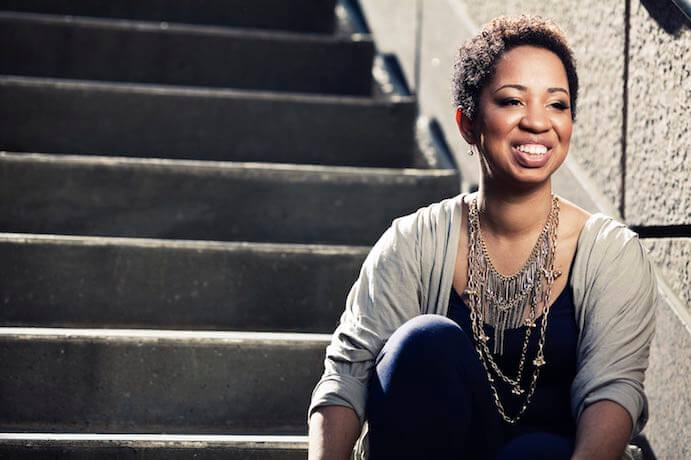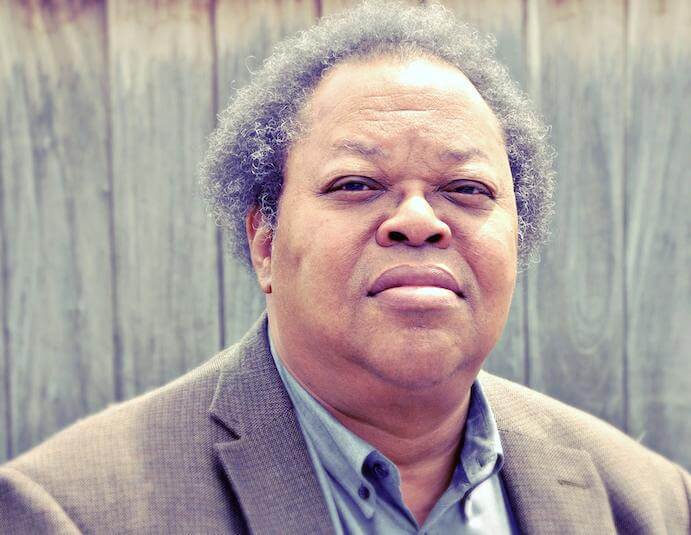Each summer, the Lincoln Center hosts the Mostly Mozart Festival, “a celebration of Mozart’s creative legacy of beauty, openness, and innovation.” The International Contemporary Ensemble (ICE) has appeared as one of Mostly Mozart’s ensembles in residence since 2014, curating several concerts which embody the spirit of the festival. This year, ICE’s opening concert on the festival, entitled “Grand Pianola Music,” was billed as a celebration of innovation surrounding the piano and various technologies. Featuring works by Courtney Bryan, George E. Lewis, and John Adams, the program and performances reinforced the ensemble’s uniquely creative artistic vision.
In the pre-concert talk, Courtney Bryan described her work, Songs of Laughing, Smiling, and Crying (2002), as a realization of her: dream collaborations with her musical idols, obsession with covers, and desire to share the emotional experiences of these passions with audiences. The resulting work consists of a bricolage of recordings ranging from mid-20th century popular crooning standards from the “Great American Songbook” to operatic tenors rhapsodizing on orchestral arias. In performance, Bryan improvises along with these recordings, providing stylistically appropriate accompaniment to the signers and occasionally taking the lead as a soloist. At several points in the piece, portions of the recordings are subtly altered, adding emotional complexity and drama. A cough in an orchestral recording is repeated and amplified to create a humorous moment of self-awareness. The repetition of a hysterical, if not deranged, laugh briefly brings perplexed terror.

Courtney Bryan
In her performance at Mostly Mozart on August 2nd, Bryan maintained a strong sense of musical direction while brilliantly transitioning between the diverse and deeply personal and emotional characters of the recordings. Her playing effortlessly traversed pianistic styles from Harlem Stride to the pyrotechnics of late Romantic piano compositions by Chopin and Liszt. Emotionally, headstrong nostalgia gave way to sobering moments of malice, witty humor, and fragile fear, culminating in melancholic sentimentality. As a spellbound audience and thunderous applause indicated, Bryan’s artistic voice is worth listening to amongst composer-performers of the 21st century.
George Lewis spoke in the pre-concert talk about his recently revised work Voyager (1987/2018) from a similarly conceptual perspective. In 1987, Lewis first formalized his improvising computer program called Voyager. At the time, Voyager could both listen to, process, and respond to the input of improvising musicians using a bank of MIDI synthesizers. Voyager also possessed a radical degree of musical autonomy through its ability to choose to ignore collaborators in performance and independently create its own music. Both of these characteristics expressed the aesthetic of many then contemporary African American multi-instrumental experimental musicians, such as those from the Association for the Advancement of Creative Musicians (AACM).
Staying true to the theme of the festival, the August 2nd performance featured an updated version of Lewis’ Voyager program playing a Yamaha Disklavier Piano as a member of an improvising ensemble comprised of Peter Evans (trumpet), Joshua Rubin (bass clarinet), Ryan Muncy (saxophone), and Cory Smythe (piano). The group began with a subtle, collective textural improvisation, gradually cascading through a series of solo or duo improvisations by each member of the collective. Each soloist delved deep into the virtuosic and experimental voice of their instrument. Evans dazzled with an athletic flexibility, creating lines of counterpoint with disparate intervals. Muncy and Rubin provided delightfully noisy styles reminiscent of multi-instrumentalist Anthony Braxton. Cory Smythe’s playing of the strings of the piano themselves added an ethereal quality. Listening to each soloist through a series microphone, Voyager’s musical contributions brought another “extended” form of playing. Not limited to two hands with five digits each, Voyager often employed chords and textures that were humanly impossible. The most remarkable aspect of Voyager in this performance, however, was its sensitivity. The program appeared to function well as a collaborator, responding to musical as well as stylistic changes and, at times, directing these itself.

George Lewis–Photo by Emily Peragine
John Adams’ Grand Pianola Music (1982), inspired by a dream of a bombastic “grand” piano racing down a California highway, notably employs two pianos playing slightly out of sync with one another. An homage to tape loops popular in the 1960s and 70s, this effect creates a glistening texture between the two pianos which is intricately filigreed with motoric woodwind lines, expansive chords in the brass, and ethereal utterances from a trio of voices. Despite its almost canonic status in contemporary music, the work received a shaky premiere in New York amongst a program of works by Columbia-Princeton Composers and received a lukewarm reception at best.
Thirty six years later, surrounded by a different breed of Columbia composers, Christian Reif led ICE through a performance of Adams work that was jubilant in its confidence. The ensemble excelled in creating the detailed textures and stunning contrasts that the work demands, particularly in the second movement. Reif’s interpretation also allowed soloists to shine through these textures. Pianist Jacob Greenberg joined Cory Smythe in deftly navigating the demanding and acrobatic piano score with elegant precision. Quince Vocal Ensemble (Amanda DeBoer Bartlett, Liz Pearse, Kayleigh Butcher) were particularly effervescent with pure tone and impressive attention to articulation.
While the performance as a whole was indeed a celebration of the piano and technology, the program also celebrated many of ICE’s core values. The clever and diverse program along with numerous collaborators showcased ICE’s trademark devotion to collaboration and versatility. These, along with an expected high level of musicianship and artistry, showcase as an institution at the height of its craft.























